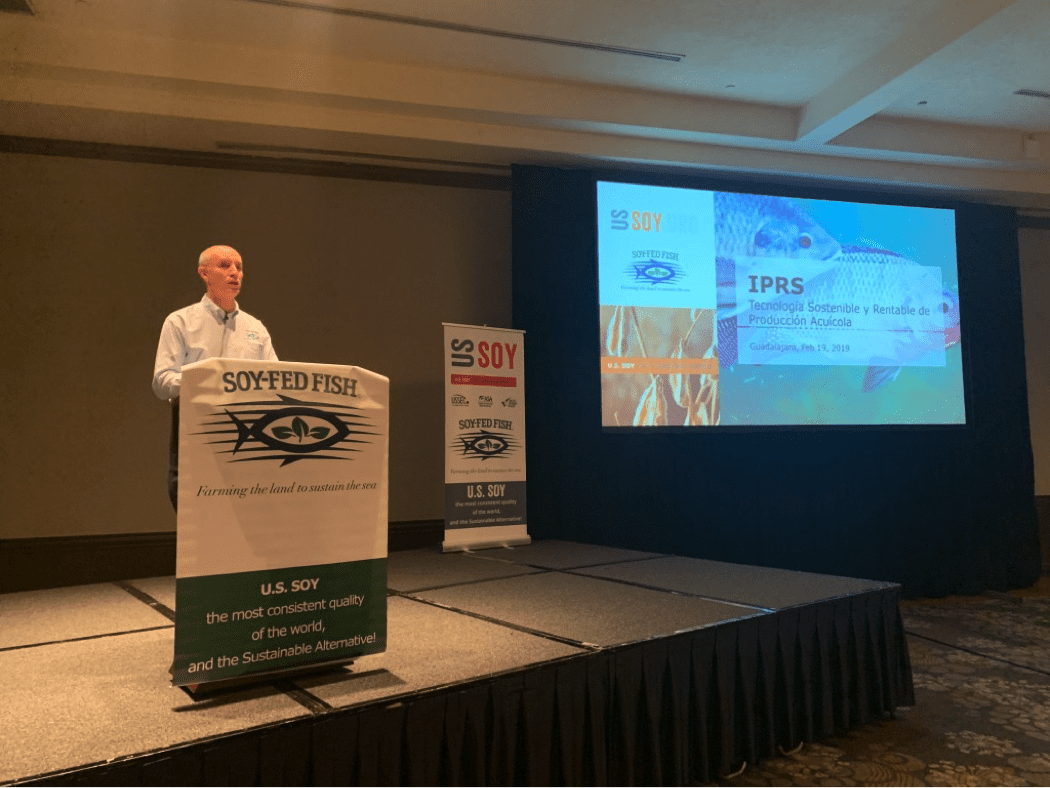Mexican Aquaculture Industry Learns More About IPRS-Grown Tilapia
- Category:
- Aquaculture
- General News

USSEC developed a workshop in Guadalajara, Mexico to present the technical and economic results of the production of tilapia grown under the In-Pond Raceway System (IPRS). The seminar brought together more than 60 people from the Mexican industry representing aquaculture feed plants, aquaculture producers, state agencies, industry suppliers, and investors who are enthusiastic and interested in this technology activity.
First introduced to Chinese fish farmers by USSEC’s International Soy in Aquaculture Program, IPRS technology has been widely adopted throughout China and Vietnam for its many advantages in product safety, operational efficiencies, and resource conservation. The fish culture in Mexico and Honduras has started to implement IPRS technology reaching great technical, economical, and environmental improvements. Colombia, as well as other areas of Mexico, will also be implementing new IPRS projects to continue the growth of this technology.
During the workshop, USSEC consultants Jesse Chappell, Esau Arana from Auburn University, and USSEC aquaculture project manager Jairo Amezquita presented the two twelve-month demonstration projects of the technology developed in Mexico and Honduras that brought the IPRS to Latin America, where pond aquaculture of tilapia and shrimp is expanding for a demanding domestic and export market. The demonstrations were a notable success, producing two to two-and-a-half times more yield while using less water, electricity, and labor per unit produced than a conventional system in an earth pond. These two tilapia farms are the first aquaculture operations in Latin America to experience energy savings and enhanced production and profitability among 39 percent and 49 percent of ROI from IPRS. Doctors Chappell and Arana, who originally developed the technology and also provided instructions for building the demonstration raceways.
USSEC consultant Gerardo Luna also presented a review of the importance of sustainability and how the U.S. soybean industry works closely with the aquaculture chain, thanks to the Best Aquaculture Practices (BAP) certification achieved and also the benefits that the Sustainable U.S. Soy trademark represents in the market for U.S. soybean users.
The IPRS, together with soy-based feed, is central to USSEC’s mission to support and promote sustainable aquaculture around the world. USSEC is confident that as more Latin American producers realize how this technology can enhance their business, it will help the industry continue to grow in this region.
For more information, visit www.soyaqua.org/technology/in-pond-raceway-system